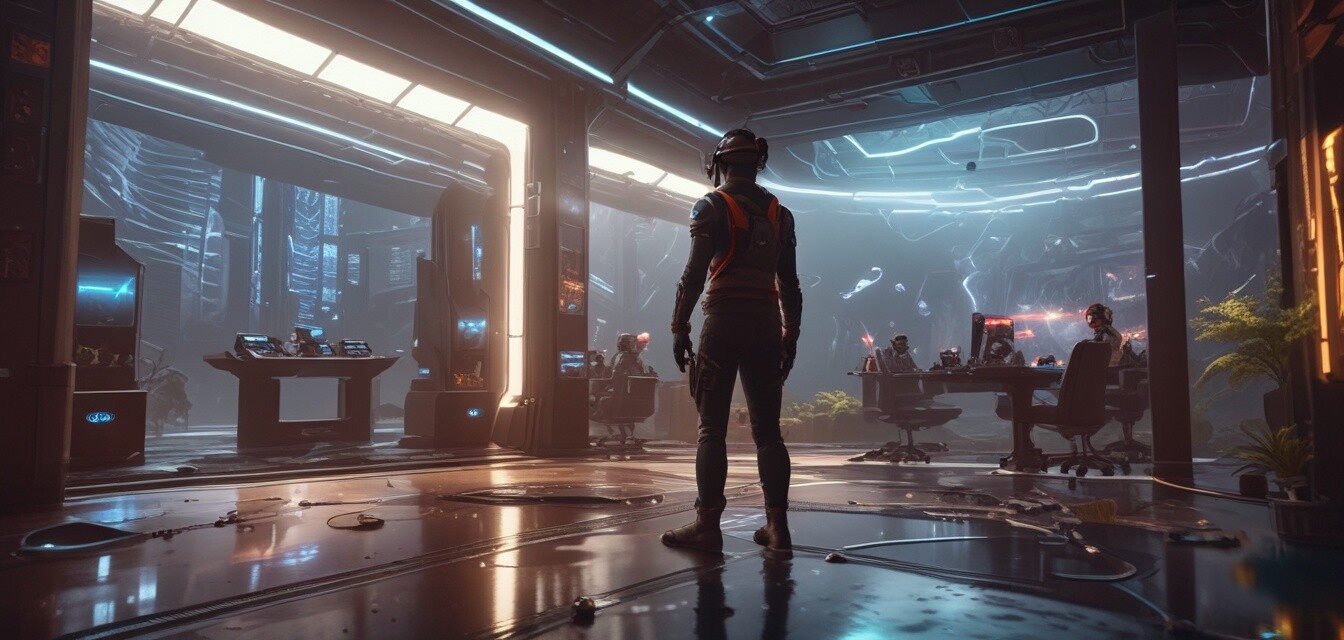
The Influence of VR on Gameplay Design
Key Takeaways
- Virtual reality (VR) transforms the way players interact with games.
- New gameplay mechanics emerge due to immersive environments.
- VR gaming enhances emotional engagement and realism.
- Developers face unique challenges when creating VR experiences.
As technology progresses, the gaming landscape continuously evolves, with virtual reality (VR) taking center stage in shaping gameplay design. This trend showcases innovative mechanics and heightened interaction that immerse players like never before. Let’s explore how VR is influencing game development, the new gameplay mechanics it introduces, and the challenges it creates for developers.
Understanding Virtual Reality in Gaming
Virtual reality is a simulated environment that can be similar to or completely different from the real world. It provides players with an engaging experience by combining hardware, software, and sensory stimuli to create an interactive digital world. Some key components typically involved in VR gaming include:
- VR Headsets
- Motion Tracking Devices
- Haptic Feedback Systems
- Interactive Controllers
How VR is Shaping Gameplay Design
The integration of VR into gameplay design introduces new dimensions of interaction and mechanics. Below are several ways VR is altering traditional gameplay:
1. Immersive Environments
One of the most apparent changes in gameplay due to VR is the creation of immersive environments. Players can physically turn their heads, explore their surroundings, and engage with the game world in a natural way. This level of immersion promotes a deeper connection with the storyline and characters, effectively enhancing the gaming experience.
2. New Interaction Mechanics
VR introduces novel interaction mechanics that are relatively absent in traditional gaming. The use of hand tracking, gestures, and voice commands enables players to interact with the environment more intuitively. For instance:
| Interaction Mechanic | Description |
|---|---|
| Hand Tracking | Allows players to manipulate objects in the game directly. |
| Gestures | Enables players to perform actions through body movements. |
| Voice Commands | For players to control elements through spoken instructions. |
3. Enhanced Emotional Engagement
One of the significant advantages of VR is its ability to heighten emotional engagement. It allows players to feel present in the game’s narrative, fostering empathy and investment in the characters and events unfolding. This psychological impact can lead to a more thrilling and memorable gameplay experience.
4. Unique Game Mechanics
VR encourages developers to innovate and create exclusive game mechanics only feasible in a virtual environment. For instance, players can experience weightlessness in space or navigate treacherous terrains realistically. This kind of creativity sets VR games apart and taps into gameplay elements previously unimagined.
Challenges in VR Game Design
While VR opens up impressive opportunities for game design, it also presents unique challenges that developers must navigate:
- Motion Sickness: Some players experience discomfort or nausea during VR gameplay, necessitating careful design considerations.
- Accessibility: Ensuring VR games are accessible to everyone can be more complex than traditional gaming due to physical and technical limitations.
- Cost of Development: Creating high-quality VR experiences can be expensive and time-consuming, deterring some developers from exploring this medium.
- Hardware Requirements: Players need specific hardware, like advanced headsets and PCs, to experience VR, limiting the player base.
Conclusion
Virtual reality is undoubtedly reshaping the gaming industry with its unique mechanics, enhanced emotional immersion, and interaction methods. While it poses challenges, the ability to create engaging narratives and dynamic worlds can lead to groundbreaking advances in gameplay design. As developers continue to push the boundaries of technology, we can expect to see even more exciting trends emerge in the VR landscape.
Pros
- Creates immersive experiences that enhance player engagement.
- Encourages innovative gameplay mechanics.
- Improves emotional connections with the narrative.
- Offers unique multiplayer experiences.
Cons
- Potential for motion sickness among users.
- Higher development costs compared to traditional games.
- Limited accessibility due to hardware needs.
- Development can be more complex than conventional games.
Explore More on Gaming Gear
To stay updated with the latest advancements in gaming technology, check out our articles on gaming accessories and News and Trends. Understanding these elements can offer valuable insights into the ever-evolving landscape of gaming.
